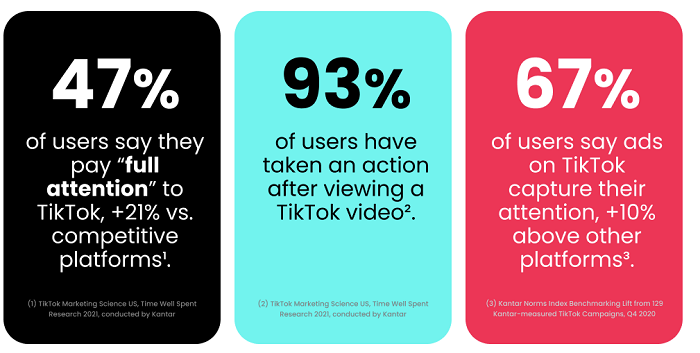Social Media
TikTok Publishes New Report on the Benefits of an Integrated Media Strategy to Boost Brand Messaging
- By Brett Belau
14 May

Yes, digital platforms are where everyone is consuming media these days, with more people spending more and more of their time using social apps to stay connected and entertained at all hours of the day.
But that doesn’t mean that traditional TV is dead.
As noted by TikTok:
“Despite viewers having more options, Linear TV (or traditional TV) remains extremely influential within entertainment and will continue to be a marketing tentpole. But as consumer attention spreads across new platforms, so should marketing strategies.”
Despite rising focus on various apps, and despite video becoming the most popular content type across all of them, traditional TV still plays a key role in our connective process. Our homes are virtually built around the TV set as the central engagement device, and as such, it’s important to consider the potential of TV to communicate your marketing messages, even as you look to shift more focus to digital platforms.
Which is what TikTok’s latest report is all about. Looking at the merging of online and TV viewing, TikTok has provided a range of stats and data points to assist in campaign planning.
As per TikTok:
“Not only are consumers spending less time watching linear TV, but 90% of them are typically multitasking while watching, and 53% are multitasking every time or almost every time they watch TV. The reality of TV and streaming services is that consumers can’t actively engage with them, leaving them to turn their attention elsewhere.”
Modern consumers are now accustomed to being in control of their time, by skipping forward or changing their preferences, or simply sharing their thoughts, then and there, whenever something happens. How often do you find yourself grabbing your phone during an ad break, or even during a movie, looking up and actors’ name or some other detail?
As such, people are engaging in a different way. Which you can use to your advantage.
“Linear TV, TikTok, and streaming services all provide marketing opportunities. But our research suggests that brands can compound success by combining these channels into a fluid video marketing strategy. Participants in this study who were primed by TikTok paid more attention to brand cues like product shots or branding when they saw them later on TV or streaming services.”

TikTok also notes that it found similar effects in reverse, with campaign indicators increasing after people had been exposed to an ad on TV, then saw a follow up on TikTok.

Of course, not every business can afford to run a TV ad campaign. But with more affordable options like YouTube’s Connected TV offerings now on the rise, and seeing more traction with increased adoption of digital TV viewing on home TV sets, there are increasing opportunities to build more comprehensive outreach strategies that incorporate various elements to reinforce branding.
Which is what TikTok recommends:
“As consumer attention continues to expand across platforms, brands that embrace reflective multimedia strategies are seeing big results. Traditional TV and streaming services can be effective at introducing new content and informing culture. But platforms like TikTok are able to build a consistent stream of interaction and engagement that allows consumers to participate in these conversations and cultural moments.”
Interaction is the key term here – providing a means to both entertain and facilitate community, via interactive elements, is critical to a modern media approach. It takes more time, more planning, and likely more investment, but the basic principle is that the way that people engage with media has changed, and they want to have the option to participate, not just consume.
Feeding into that, however, you can, can help to boost brand messaging.
There’s more insight and case study examples in TikTok’s full report here.
Source: www.socialmediatoday.com, originally published on 2022-05-12 16:47:39
Connect with B2 Web Studios
Get B2 news, tips and the latest trends on web, mobile and digital marketing
- Appleton/Green Bay (HQ): (920) 358-0305
- Las Vegas, NV (Satellite): (702) 659-7809
- Email Us: [email protected]

© Copyright 2002 – 2022 B2 Web Studios, a division of B2 Computing LLC. All rights reserved. All logos trademarks of their respective owners. Privacy Policy

![How to Successfully Use Social Media: A Small Business Guide for Beginners [Infographic]](https://b2webstudios.com/storage/2023/02/How-to-Successfully-Use-Social-Media-A-Small-Business-Guide-85x70.jpg)



![How to Successfully Use Social Media: A Small Business Guide for Beginners [Infographic]](https://b2webstudios.com/storage/2023/02/How-to-Successfully-Use-Social-Media-A-Small-Business-Guide-300x169.jpg)


Recent Comments